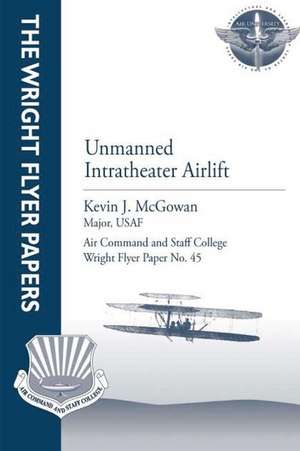Unmanned Intratheater Airlift
Autor Major Usaf Kevin J. McGowan Contribuţii de Air University Press, Air University Pressen Limba Engleză Paperback
Preț: 122.28 lei
Nou
Puncte Express: 183
Preț estimativ în valută:
23.40€ • 24.48$ • 19.44£
23.40€ • 24.48$ • 19.44£
Carte disponibilă
Livrare economică 12-26 martie
Preluare comenzi: 021 569.72.76
Specificații
ISBN-13: 9781479196760
ISBN-10: 1479196762
Pagini: 154
Dimensiuni: 152 x 229 x 8 mm
Greutate: 0.21 kg
Editura: CREATESPACE
ISBN-10: 1479196762
Pagini: 154
Dimensiuni: 152 x 229 x 8 mm
Greutate: 0.21 kg
Editura: CREATESPACE
